Amy Reader

Amy Reader
Painter / Sculptor / Fiber and Installation Artist
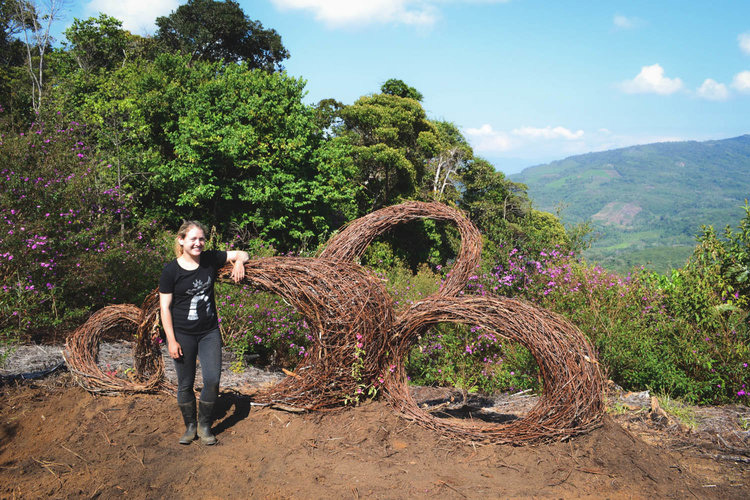
Amy with her sculpture in Peru
Amy Reader is a multi-talented artist whose work draws inspiration from the organic shapes found in flowers and trees.
This August she completed an Artist Residency at Sachaqa Centro De Arte in San Roque, Peru, where she created her largest permanent work – “Mayatataq rishanki? (A donde vas?)”. It’s a site specific sculpture using materials naturally sourced from the environment.
We love the birds nest/vortex forms Amy creates, and the way their structures both compliment and contrast their jungle setting. Looking at (and through) her sculptures makes us introspective. We’re drawn to the depth this artwork inspires, and Amy’s intentions behind it.
Find out more, in Amy’s words.
From Amy:
I went to the jungle of Peru looking for a break from my busy day-to-day life and a chance to retreat to the mountains. Spending time in the forest has always been important to me, and I was drawn to the opportunity to create a site specific installation using materials naturally sourced from the environment. After nearly a year of planning, I arrived in the jungle with a backpack, one carry-on sized suitcase, and only a faint idea of what I might make during my month in San Roque.
The trail where I worked was about an hour hike up a mountain. The first portion of the trail went straight up the mountain. The latter half was the pinnacle trail, or El Mirador, and that was the sculpture trail where I worked.

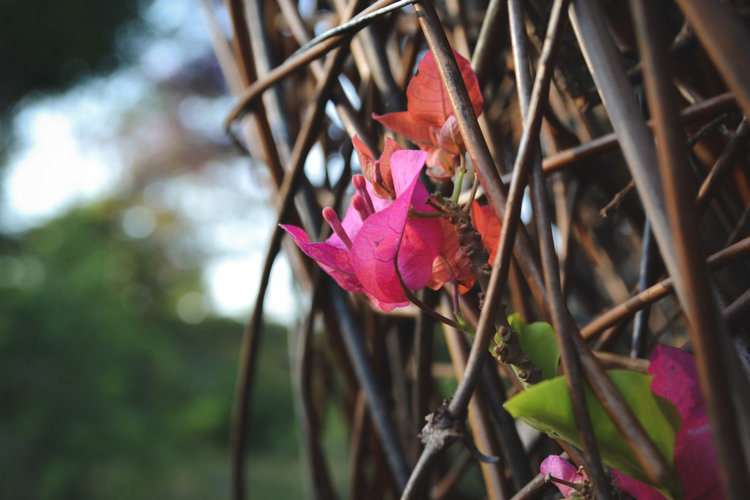
Two other artists have created three sculptures along this trail and I hiked past each of them every day on my way to the site. One of the owners of the arts center where I was in residence took me on the first hike up to where I could scout my location. He told me not to worry too much about picking a site because my place would choose me. I didn’t really take this sentiment to heart until we arrived at the end of the trail. The trail ends in a large (formerly empty) space that is surrounded by purple, flowering bushes that were in full bloom on my first hike. Flowers have always occupied a prominent space in my work and life, so I instantaneously knew that this was my place.
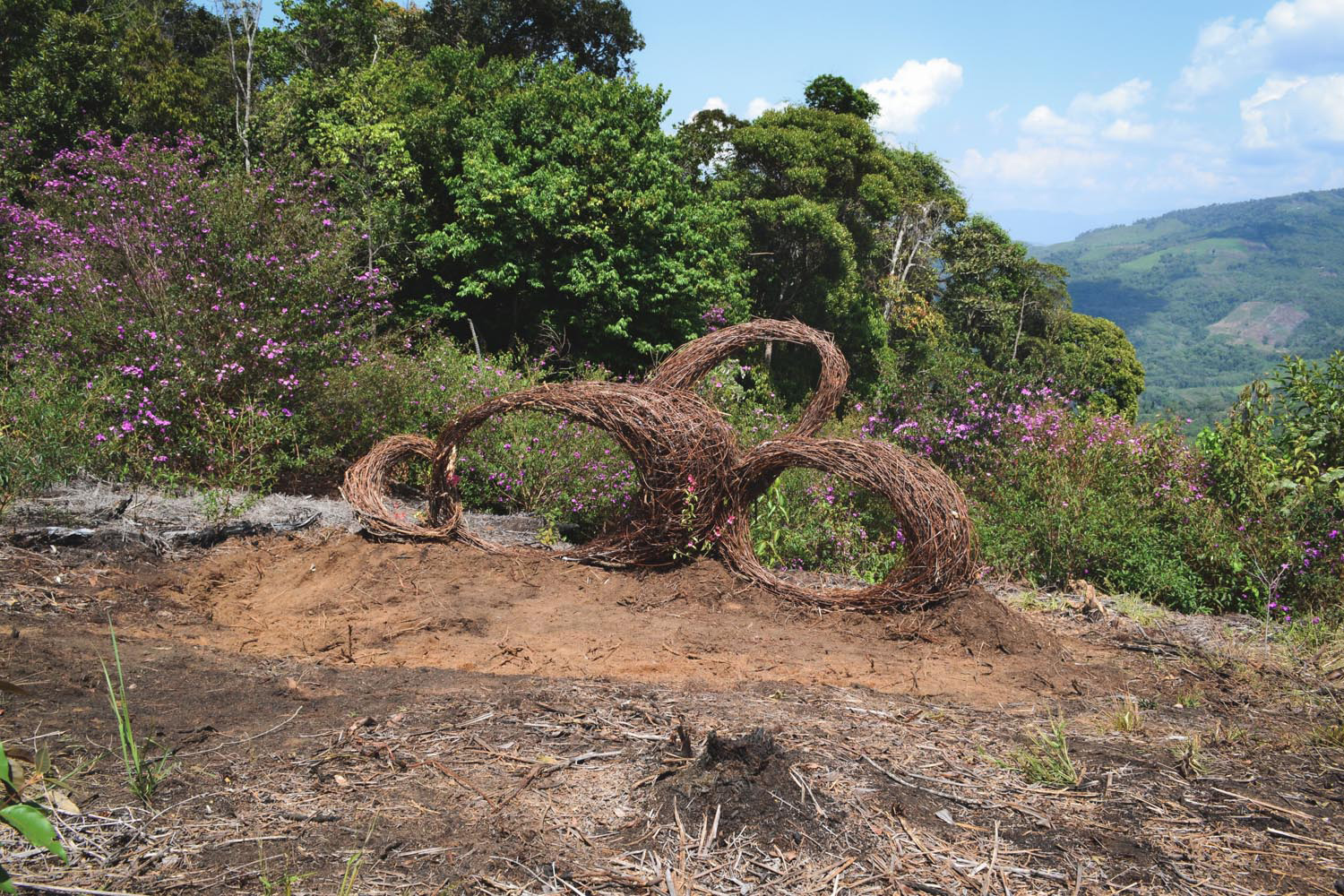
Before going to Peru, I had thought of a few things I wanted to contemplate during my time in the jungle. The most pressing of those was about the concept of home. I moved in the middle of my childhood from Chicago to North Carolina and ever since I’ve never really felt like I had a good answer to the question, “Where are you from?” Unsurprisingly, when you are a very pale, blonde haired and blue eyed person speaking Spanish with an accent in a secluded village in Peru, that is the question that you are asked the most often. I’ve always said that I feel more at home in the trees and mountains than anywhere else. The piece that I made in the jungle is a meditation on the concept of home and the different meanings that it carries.
The piece that I made in the jungle is a meditation on the concept of home
and the different meanings that it carries.
When I found the flower filled space at the top of the mountain, I knew that would be my home during the month in the jungle. The materials that I sourced are the same materials that the locals use to build their houses and roofs. The first thing I thought I would name the piece was “De donde eres?” – “Where are you from?”
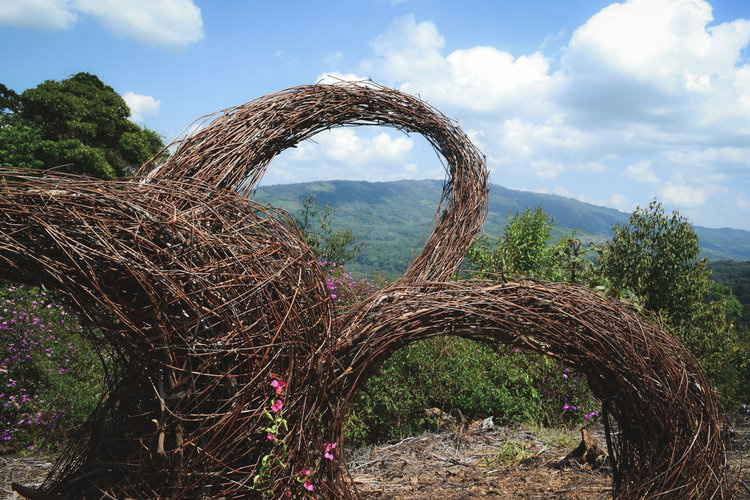
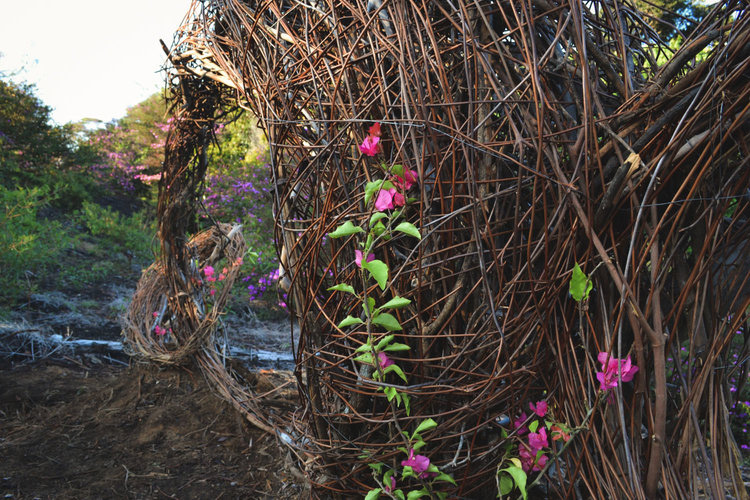
I thought that during the hours I spent working away at the top of the mountain I would reconcile my origin and leave Peru with a neat little answer to that question. Instead, during my hours spent hacking up wood, digging holes, and collecting dried fern stalks, I slowly realized I was asking the wrong question. I realized that instead of getting caught up with where I was from, I should be more concerned with where I am going. I understand that where you have been influences your trajectory, but by absorbing so much mental energy in making sense of the past, I was losing sight of what is to come.
I understand that where you have been influences your trajectory, but by absorbing so much mental energy in making sense of the past, I was losing sight of what is to come.
This shifted the name of the piece from “De donde eres?” to the final name: “Mayatataq rishanki? (A donde vas?)” which translates to “Where are you going?” The first two words are Quechua – the language of the indigenous people of Peru and the parenthetical is the Spanish translation. I wanted to acknowledge the past while still looking to the future, so I chose to reference the history and future of the place where I was working.
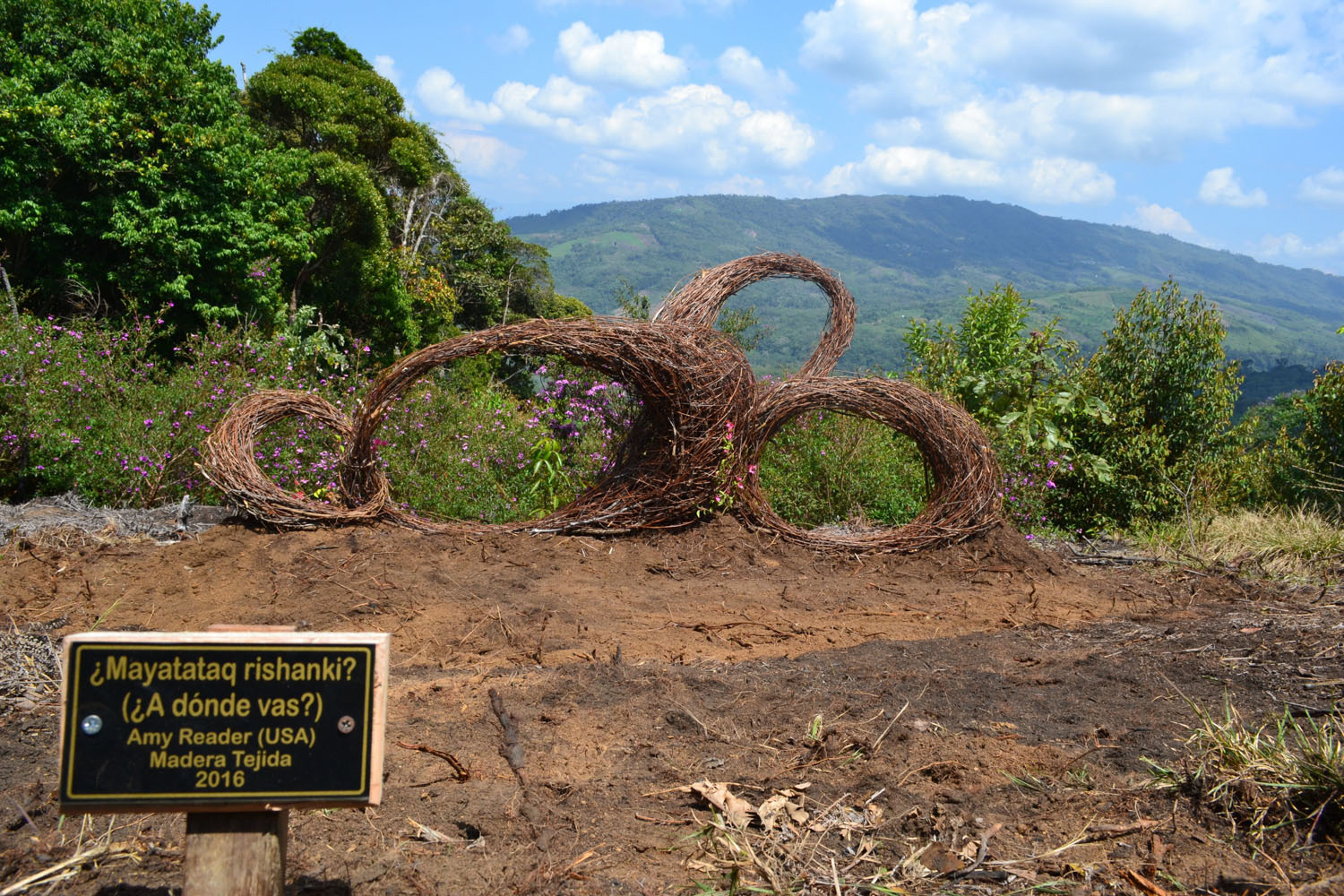
In the months before arriving in Peru, I moved twice. Moving really makes you reevaluate your quantity of possessions. I was actively downsizing and taking a hard look at my relationship with all the stuff I’d accumulated. This impacted my artwork because I was not motivated at all to create new pieces because I didn’t want to make more stuff. I didn’t want to add to the clutter. Going to Peru gave me the opportunity to create a work of art that is in a lot of ways a rearrangement of things that were already there. Most of the wood, vines, and other materials that I used were all found within a five minute walk of the final piece.
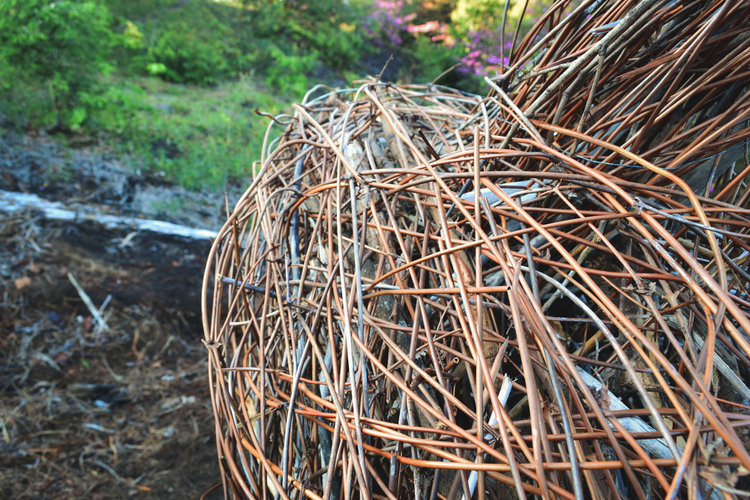

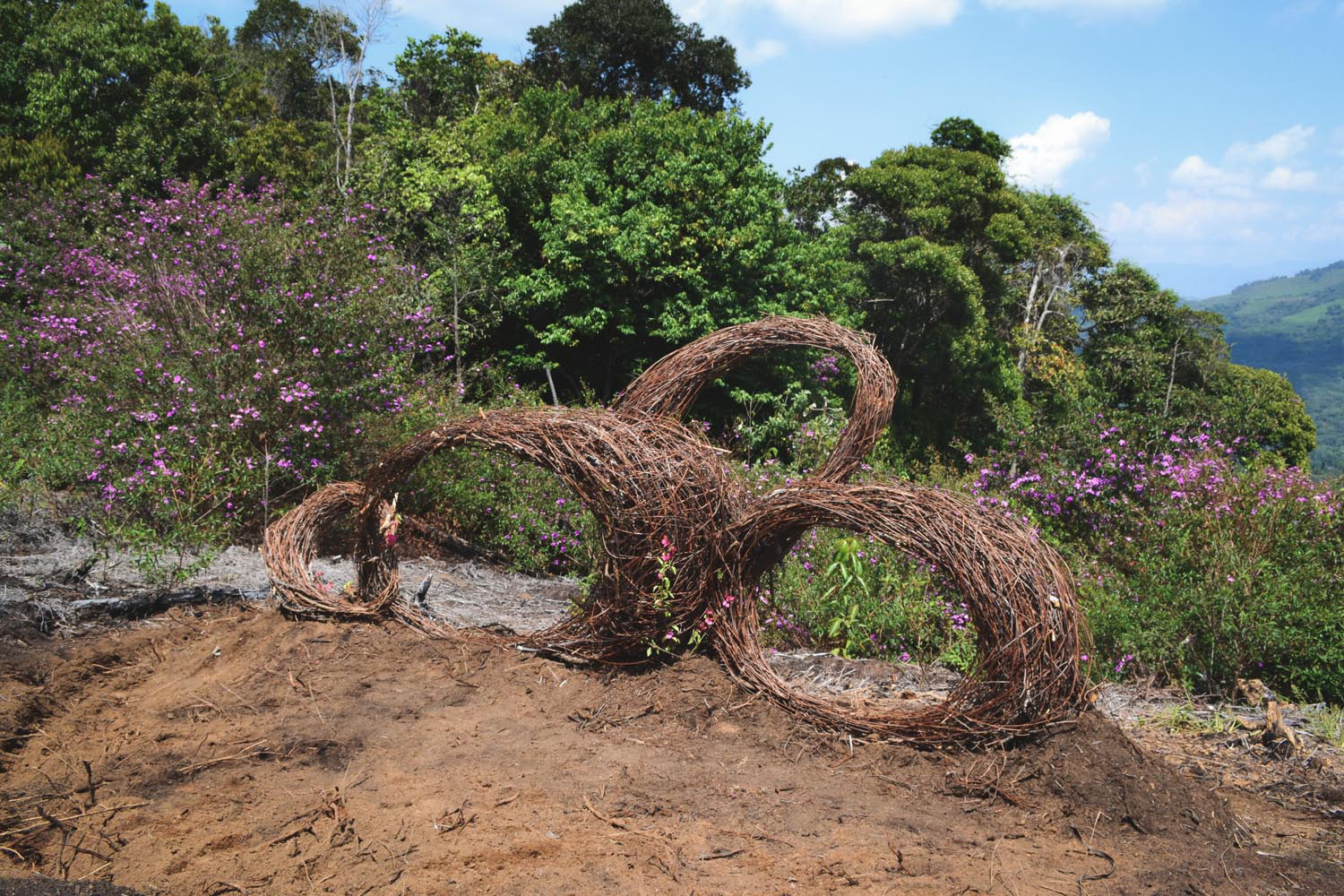
I also planted bugambilia (a local flowering vine) at the base of the piece and over time, the vines will cover the sculpture and the piece that I made will take on a life of its own. It will continue to change and grow with each season and years from now it might look completely different. Creating a work and knowing that it will live on and sustain itself beyond me was incredibly satisfying.
After returning home from Peru, I don’t have as many answers to the questions I had. If anything, I have more questions. But now, I think I am asking better questions.
Photos courtesy of Amy Reader
To see more of Amy’s work see her Portfolio. You can also find her on Instagram and Facebook.
Be the first to comment